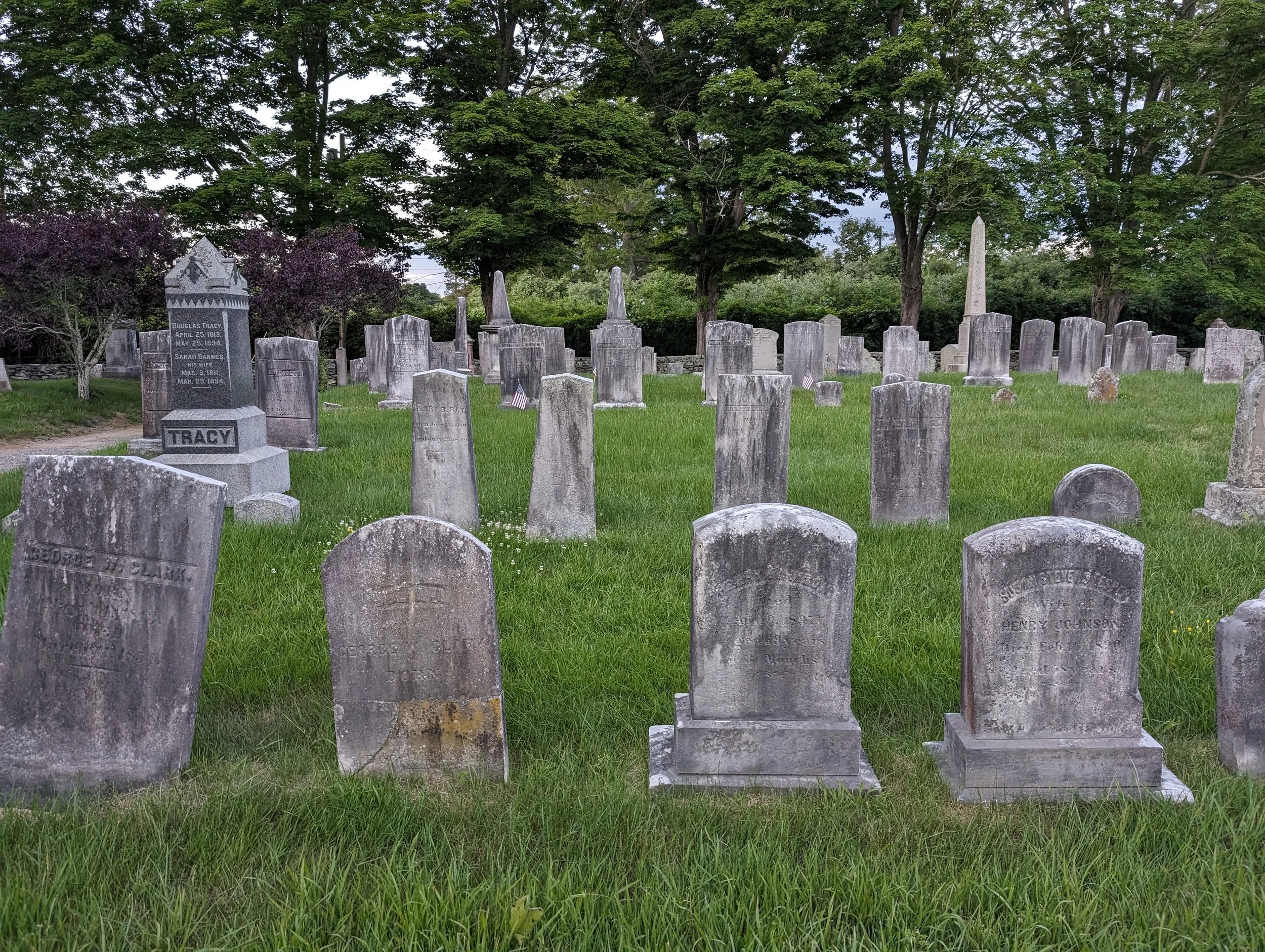Jewett City Vampires
By Ophelia W. Ravenia
Jewett City Cemetery, June 2024. Photograph by Ophelia W. Ravenia.
New England has a rich history of vampire lore. As discussed in my previous post about Mercy Brown, much of this had to do with illness, superstition, and lack of medical understanding.
Among New England’s many vampire tales is that of the Jewett City Vampires of Connecticut.
During the 1840’s and 1850’s, several members of the Ray family of Jewett City, Connecticut began to fall ill. They were previously young and healthy, but slowly began to waste away. They grew thin, weak, and pale, before ultimately succumbing to this mysterious illness. Between 1845 and 1851 the Ray family lost its patriarch, Henry, and two sons, Lemuel and Elisha.
The headstones of Henry B. Ray & Lucy H. Ray, June 2024. Photograph by Ophelia W. Ravenia.
The headstones of Lemuel Ray & Elisha Ray, June 2024. Photograph by Ophelia W. Ravenia.
In 1854 a third son, Henry Nelson Ray, began to fall ill. Like his father and two brothers, Henry Nelson began to grow thin, weak, and pallid. The community started to suspect that the culprit of the illness and death that had befallen the Ray family may be vampires. It was believed that the deceased members of the Ray family were actually vampires, and were slowly feeding upon the living– draining them of their health and life. In an effort to save Henry Nelson and the rest of the Ray family, the bodies of the suspected vampires– the deceased patriarch and sons of the Ray family– were exhumed and their bodies were burned before being reinterred. This desperate effort to save Henry Nelson appeared to work– he went on to live for many more years.
The worn foot stone of Henry Nelson Ray, June 2024. Photograph by Ophelia W. Ravenia.
While vampire fears were common in eighteenth and nineteenth century New England, the true culprit of these deaths was not vampirism, but tuberculosis.
Tuberculosis was a common disease during the eighteenth and nineteenth centuries. It was not well understood until the late 1800’s. Tuberculosis is a contagious bacterial infection that can remain latent in the body for years before the onset of symptoms. Common symptoms of tuberculosis include cough, loss of appetite, weakness, fatigue, weight loss, and fever. The weight loss and weakness earned the disease its historic name– consumption– because it appeared to consume the bodies of its victims. Since tuberculosis is contagious and can have a prolonged latency period, historically it was not uncommon for families to slowly succumb to the disease over the course of several months or years. Thus, it is the true culprit of many New England Vampire legends.
The Old Ray Family Plot— second row back, June 2024. Photograph by Ophelia W. Ravenia.
The New Ray Family Plot, June 2024. Photograph by Ophelia W. Ravenia.
To visit the graves of the Ray Family, head to the Jewett City Cemetery on Anthony Street.
There are two Ray family plots in the cemetery, both associated with the Ray family of the Jewett City Vampire lore.
The first Ray family plot is near the northern pathway in the cemetery, two rows east of the flagpole, and near an obelisk dedicated to the Tracey family.
The second Ray family plot is between the cemetery’s southernmost path and middle path. It is slightly east of a row containing three zinc headstones– if you pass the zinc headstones you’ve gone too far. Henry’s headstone is quite worn and covered with lichen– it’s illegible until you get very close to it.
Jewett City Cemetery as viewed from Anthony Street, June 2024. Photograph by Ophelia W. Ravenia.
For GPS directions, use 52 Anthony Street, Jewett City, Connecticut.
Sources & Further Reading:
https://todayincthistory.com/2019/03/08/march-8-the-19th-century-connecticut-vampire-panic/
https://www.smithsonianmag.com/history/the-great-new-england-vampire-panic-36482878/
https://www.registercitizen.com/news/article/In-1854-vampire-panic-struck-Connecticut-town-12156066.php






